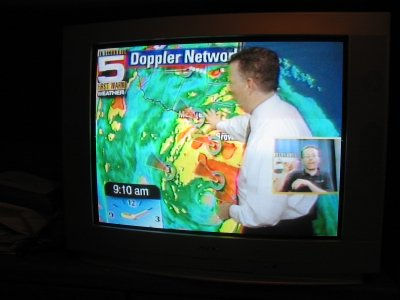Most of us, at one point or another, have had our body fat levels "measured."
I put "measured" in quotation marks because a body fat "measurement" is not a measurement at all. Body fat testing is a prediction, and a very poor one.
The Weather Man Doesn't Measure the Weather
When a weather man gives you a forecast, he doesn't measure the weather. He is predicting the weather. And that's exactly what is happening when you have your body fat tested. We are predicting your body fat levels, not measuring them. Along with that prediction comes a certain amount of error. Just as the weatherman cannot predict the weather with 100% accuracy, we cannot predict your body fat levels with 100% accuracy. In fact, we can't even predict your body fat with 70% accuracy. In this article, you are about to learn just how bad the prediction really is.
Nobody Wants to Be Killed For Body Fat Testing
The only way to truly measure your body fat is through carcass analysis. That means you would have to be dead so that we could strip all of the fat off of your body and weigh it. I don't see anybody volunteering for that any time soon.
Since we can't directly measure body fat in live humans, we have to find a way to predict it. This is where the various methods of body composition testing come into play. We measure what we CAN measure in a live human, and then use that measurement to predict how much body fat you have. In the case of skinfold testing, we measure the thickness of skinfolds at various areas of your body. In the case of bioelectrical impedance (BIA), such as what is used by Tanita Scales, we measure your body's resistance to an electrical current. In the case of underwater (or hydrostatic) weighing or the Bod Pod (aka air displacement plethysmography), we measure your body volume and body weight. In the case of dual energy X-ray absorptiometry (DEXA), we measure your body's absorption of two different x-ray beams.
Regardless of how the measurement is done, we end up with a prediction of what we think your body fat would be if we were to kill you, take all of the fat, and weigh it. This prediction has an error associated with it, and the size of this error varies depending upon which technique we used to take the measurement. While some techniques have smaller errors than others, even the best techniques have pretty large errors...larger than what most people realize.
Click here to read Part 2 of this series, which will tell you just how big these errors are...


Great information to know. People concern about their body more and more these days.
Very good and interesting article. Perhaps the best way to predict your body fat is to use a mirror. I predict if you like what you see, a smile will appear. If not, you have work to do.
I definitely would say that would work best for a lot of people, but might not work for people with body image issues.
Most flattering heatmap EVER! LOL.
Could you mean “estimate” rather than “predict”? The weather reporter doesn’t tell you what the weather is NOW but at some point in the future. However, I think you are looking to understand bodyfat in the present, and not how fat one will be next week…
Lady Geek,
The term “predict” means we are trying to predict what your body fat would be if we were to kill you, strip off all of the fat, and weigh it. In this sense, “predict” and “estimate” mean the same thing.
I recently found you through jpfitness forums and am really enjoying the information presented and the way the info is presented. i look forward to continued reading. Thanks!
Eric,
Thank you very much for the positive comment! I’m glad you like the site and information!
Hello James,
This is excellent information. I linked it in my research review. Loving the new site, please keep up the great work.
Thanks for the link, Alan! I appreciate the comment.
Prediction–I like that term and I’ve never thought about it that way. But predicting/measuring body fat does at least help a trainee know if he/she is losing fat, even if the % is not exact.
Yes, Kevin, I would agree with you that it gives you a rough idea if you’re losing fat. Still, even there one has to be careful at times. In the program I used to do research for, we had clients who obviously lost large amounts of fat (judging by circumference measurements), yet saw an increase in body fat % according to BIA. This did not happen very often, but it did happen. And this is because weight loss causes shifts in FFM density, which can throw off the measurements when trying to track changes over time.
Lol at Chris! Thanks for writing the article James. I heard too many people using the above methods and they automatically assume that what is predicted by the methods above is their “actual” body fat. It is just an analysis, at least a good tool to track progress whether a trainee or a dieter is losing body fat or gaining lean muscle mass, but not for actual determinant of real assessment.
Hey, Jean, thanks for the comment. Yeah, too many people put too much faith in the number, without realizing that it’s a very rough estimate
My word, that weather reporter has what appears to be a huge angry flaming red
penis and scrotum.
So far the article is quite provocative, thank you for it.
Haha, Chris…I didn’t notice that before!